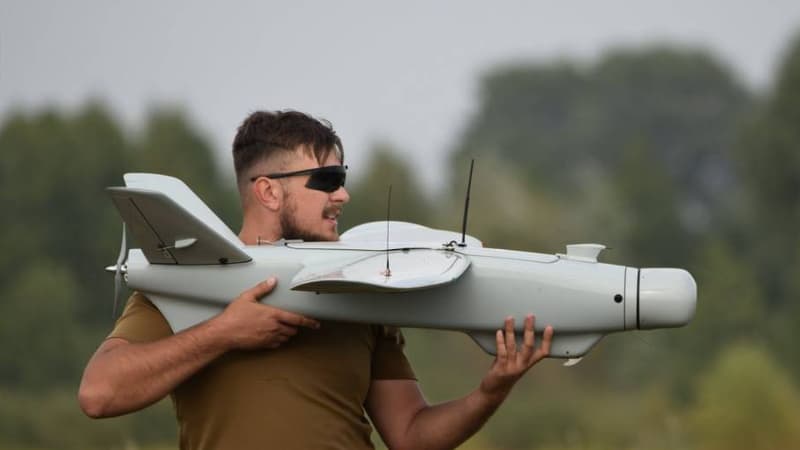In eastern Ukraine, soldiers quickly unpack a large gray drone and launch it to check the height of the clouds and reconnoiter the area, less than 10 kilometers from the Russian positions. Reconnaissance or attack drones, military or civilian, or “unmanned aerial vehicles” (UAVs), are now essential, every day and for each side, on the Ukrainian war front.
ultra-precise artillery
Operators of the 45th Brigade use a “Ukrainian-made” reconnaissance drone, the Leleka-100, to relay detailed information to their artillery, which can better hit its targets and thus reduce its shell consumption.
“We can’t afford to use a lot of shells on one target (3, 4 or 5, no more) because we don’t have a lot of shells unlike the Russians,” the soldier continues.
In a van hidden under the trees, operators monitor on laptop screens the images and data transmitted by the drone, affectionately nicknamed “birdie” (little bird, “ptachki” in Ukrainian).
Far from the image of the basic infant who takes his place in a trench, here they have training in computer science or marketing and at least some speak fluent English. They boast of the successes achieved by the Ukrainian artillery thanks to drones, such as the destruction in a single day of four Russian Armata tanks, a state-of-the-art machine.
But the cost of a drone is high. The unit’s large Leleka-100, which looks like a model airplane, costs around 37,500 euros, explains Denys, 30, a squad leader. A coffee lover and nicknamed “Hipster”, Denys previously worked for a Ukrainian company that created a very popular artificial intelligence application.
Industry “baby”
Manufactured by the DeViRo company at a secret location in Ukraine and adopted in 2021 by the Kiev military, the drone transmits video footage of targets and artillery fire.
According to him, the machine is of “average” quality in comparison with Western models, but it is easy to get spare parts from Ukrainian manufacturers. Unlike the small drones used by civilians, the Leleka-100 can stay in the air for two to three hours. Their lifespan is limited: on average, each drone makes only 20 flights before being shot down by the enemy.
And the soldiers of the unit are well aware of the advantage of the Russians in this “artillery war.” Moscow’s military can afford to fire large bursts of shells and has also surpassed Ukraine in terms of drone stocks. You can send in a large number of cheap attack UAVs like the Iranian-made Shahed and hope that at least one hits its target, says Andriï.
Russia also makes Lancet tactical attack drones that are “effective enough to destroy Ukrainian artillery units,” he said, while Ukraine does not produce equivalent devices.
“Our industry is trying, but it’s only trying, it doesn’t have enough experience yet,” laments the soldier.
“Our drone industry is like a baby”, says Andriï, “we have to invest in this sector to make it grow”.
Source: BFM TV


